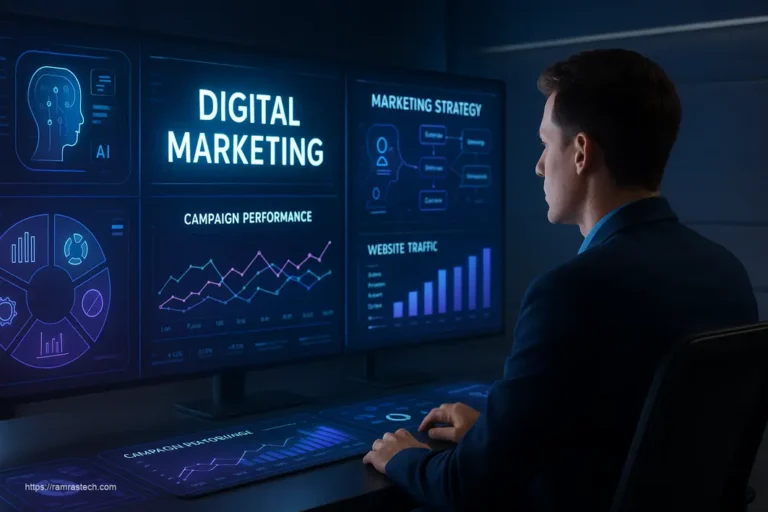5 Proven Content Marketing Hacks for Explosive Growth!

Ever feel like your content is just getting lost in the never-ending sea of online information? You’re not alone. In today’s digital landscape, creating content isn’t enough – you need strategic content marketing hacks that actually cut through the noise and drive real results.
Every day, over 7 million blog posts are published, and the average person is bombarded with thousands of marketing messages. Standing out isn’t just challenging – it can seem nearly impossible.
But here’s the thing: businesses that master content marketing generate 3x as many leads as traditional marketing while costing 62% less. Content marketing isn’t just effective – when done right, it’s revolutionary.
Let’s dive into 15 powerful content marketing hacks that can transform your strategy and drive explosive business growth.
1. Create a Content Strategy That Actually Works
Ever wonder why some brands seem to hit the bullseye with every piece of content they publish? It’s no accident. Behind every successful content marketing program lies a rock-solid strategy.
A well-defined content strategy is your roadmap to success – it aligns your content creation efforts with your business goals and audience needs. Without it, you’re essentially throwing content into the void and hoping something sticks.
Here’s how to develop a content strategy that delivers results:
Audit Your Existing Content
Before creating new content, take stock of what you already have. Analyze which pieces perform well and which fall flat. Look for:
- Topics that drive the most engagement
- Content formats your audience prefers
- Distribution channels that generate the most traffic
- Content gaps that need filling
Tools like Google Analytics and SEMrush can help identify your top-performing content and opportunities for improvement.
Define Clear Goals and KPIs
Every piece of content should serve a purpose. Are you aiming to:
- Generate leads?
- Increase brand awareness?
- Boost conversions?
- Establish thought leadership?
- Improve customer retention?
Once you’ve determined your goals, establish specific KPIs to measure success – whether that’s pageviews, time on page, conversion rates, social shares, or another metric that aligns with your objectives.
Map Content to Your Customer Journey
Different content types work better at different stages of the buyer’s journey. Create content that addresses your audience’s needs at each stage:
- Awareness: Educational blog posts, infographics, and how-to guides
- Consideration: Case studies, comparison guides, and webinars
- Decision: Product demos, customer testimonials, and free trials
By mapping content to your customer journey, you ensure you’re providing value at every touchpoint.
2. Harness the Power of Topic Clusters
One of the most effective content marketing hacks for boosting SEO performance is organizing your content into topic clusters.
Instead of creating disjointed individual pieces, develop comprehensive content hubs around core topics relevant to your business. This approach helps search engines understand your site architecture and positions you as an authority on specific subjects.
Here’s how to implement the topic cluster model:
- Identify pillar topics – These are broad subjects central to your business (like “content marketing” for a digital agency)
- Create pillar content – Develop comprehensive guides (2,500+ words) that cover all aspects of these topics
- Develop cluster content – Create more focused articles (1,500+ words) that explore specific aspects of the pillar topic in greater depth
- Link everything together – Connect cluster content to pillar content with internal links
For example, this article about content marketing hacks is cluster content that would link to a pillar page about content marketing strategies.
HubSpot saw a 50% increase in organic traffic after implementing topic clusters. It’s a proven way to boost your content’s visibility and authority.
3. Optimize Content for Search Intent (Not Just Keywords)
Keyword research is still important, but understanding search intent – the reason behind someone’s search query – is the real game-changer.
Google’s algorithms have become sophisticated enough to understand user intent, and they prioritize content that best satisfies what users are looking for.
There are four main types of search intent:
- Informational: Users seeking information or answers (“how to create an email newsletter”)
- Navigational: Users looking for a specific website (“HubSpot login”)
- Commercial: Users researching before making a purchase (“best email marketing tools”)
- Transactional: Users ready to buy (“buy Mailchimp subscription”)
To optimize for search intent:
- Analyze the top-ranking pages for your target keywords
- Note the content format (listicles, how-to guides, product comparisons)
- Identify what questions they answer
- Create content that matches this intent but offers even more value
When you align your content with search intent, you’re more likely to rank higher and keep visitors engaged once they find you.
4. Repurpose Top-Performing Content Across Multiple Formats
Creating high-quality content takes time and resources. Smart marketers maximize their ROI by repurposing successful content into multiple formats.
This content marketing hack allows you to:
- Reach audience segments who prefer different content types
- Extend the lifespan of your best content
- Reinforce key messages across channels
- Get more mileage from your content investment
Here’s how to do it effectively:
Turn a Comprehensive Blog Post Into:
- An engaging infographic highlighting key statistics
- A slide deck for presentation platforms like SlideShare
- A script for a YouTube video or podcast episode
- A series of social media posts with bite-sized insights
- An interactive quiz or assessment
- An email course delivered over several days
Example: Content Multiplication in Action
Buffer transformed one comprehensive blog post about social media strategies into 11 different pieces of content, including social graphics, a SlideShare presentation, and a webinar. This approach generated 4x more traffic than the original post alone.
When repurposing content, always add value by including new insights, updating statistics, or adjusting the angle to suit the platform and format.
5. Create 10x Content That Crushes the Competition
In a world overflowing with mediocre content, creating what Rand Fishkin calls “10x content” – content that’s 10 times better than anything else ranking for that topic – is a game-changing content marketing hack.
10x content stands out because it’s:
- Comprehensive and definitive
- Visually engaging and well-designed
- Loaded with unique insights and original research
- User-friendly across all devices
- Emotionally resonant and memorable
To create 10x content:
-
Start with extensive research – Don’t just scratch the surface; dive deep into the topic and find angles others have missed
-
Provide unique value – Include original data, expert interviews, or personal experiences that can’t be found elsewhere
-
Make it visually stunning – Invest in high-quality images, custom graphics, or interactive elements
-
Format for readability – Use clear headings, bullet points, and short paragraphs to enhance user experience
-
Update regularly – Keep your 10x content fresh with new information and insights
Brian Dean of Backlinko used this approach with his comprehensive guide to SEO, which ranks #1 for many competitive keywords and has generated thousands of backlinks.
6. Leverage User-Generated Content to Build Trust
One of the most underutilized content marketing hacks is tapping into your community to create authentic, persuasive content that resonates with prospects.
User-generated content (UGC) – including reviews, testimonials, social media posts, and case studies – builds trust in ways your branded content simply can’t.
Consider these statistics:
- 92% of consumers trust recommendations from others, even people they don’t know, over branded content
- UGC results in 29% higher web conversions than campaigns without it
- Websites with UGC see a 20% increase in return visitors
Practical Ways to Incorporate UGC:
- Create customer story highlight reels for your website and social media
- Launch branded hashtag campaigns encouraging customers to share their experiences
- Feature customer reviews prominently on product pages
- Host contests inviting users to submit content related to your products
- Develop a customer community where users can share tips and use cases
GoPro built its entire content strategy around UGC, featuring customer videos that showcase both the product capabilities and authentic customer experiences. This approach generated millions in earned media value.
7. Build a Content Distribution System That Amplifies Reach
Even the most brilliant content fails without proper distribution. Many marketers make the mistake of spending 80% of their time creating content and only 20% promoting it. Flip that ratio.
A systematic approach to content distribution ensures your content reaches the right audience at the right time through the right channels.
Create a Multi-Channel Distribution Plan
Develop a distribution checklist for every piece of content that includes:
Owned Media Channels
- Email newsletter segments (targeted based on content relevance)
- Company blog and website
- Social media profiles (with platform-specific formatting)
- Mobile app notifications (if applicable)
- Internal channels (Slack, employee advocacy)
Earned Media Opportunities
- Industry publications that accept guest posts
- Podcast interview opportunities related to content topics
- Relevant online communities (Reddit, Facebook Groups, Discord servers)
- Influencer relationships for potential shares
Paid Distribution
- Social media boosting (with audience targeting)
- Native advertising platforms
- Content discovery networks like Outbrain or Taboola
- Retargeting campaigns to website visitors
Implement the 80/20 Promotion Rule
For every hour spent creating content, spend four hours promoting it. This might seem excessive, but Derek Halpern of Social Triggers built a six-figure business by following this principle.
8. Use AI to Scale Content Production (Without Sacrificing Quality)
Artificial intelligence has revolutionized content creation, offering one of the most powerful content marketing hacks for scaling production while maintaining quality.
While AI shouldn’t replace human creativity and expertise, it can dramatically enhance your content workflow.
Smart Ways to Leverage AI in Your Content Strategy:
-
Generate content outlines – Tools like ChatGPT can create comprehensive outlines that ensure you cover all key points
-
Research relevant statistics and data points – AI can help compile research faster than manual methods
-
Overcome writer’s block – Use AI to suggest introductions, conclusions, or transitions when you’re stuck
-
Create first drafts – AI can produce initial drafts that you can then refine with your brand voice and expertise
-
Optimize existing content – AI can identify gaps in published pieces and suggest improvements
-
Scale personalization – Create customized content variations for different audience segments
Best Practices for AI-Assisted Content:
- Always have human editors review and enhance AI outputs
- Use AI as a starting point, not the final product
- Inject your unique perspective and experiences
- Check all facts and statistics generated by AI
- Develop a hybrid workflow that maximizes both AI efficiency and human creativity
Companies like Washington Post have used AI to scale their content production, with their in-house Heliograf system generating hundreds of short reports on topics like sports and election results.
9. Craft Irresistible Headlines Using Proven Formulas
A great headline can be the difference between a viral hit and a complete flop. On average, 8 out of 10 people will read your headline, but only 2 out of 10 will click through to read the content.
The most effective content marketing hacks include mastering headline formulas that drive clicks without resorting to clickbait.
High-Performing Headline Formulas:
-
The Number + Adjective + Keyword + Promise Formula
Example: “7 Powerful Content Marketing Hacks That Double Engagement” -
The How-To Formula
Example: “How to Create a Content Strategy That Actually Drives Revenue” -
The Question Formula
Example: “Is Your Content Marketing Strategy Leaving Money on the Table?” -
The Curiosity Gap Formula
Example: “The Unexpected Content Strategy That Transformed Our Business” -
The Negative Angle Formula
Example: “Stop Making These 5 Deadly Content Marketing Mistakes” -
The What/Why/How Formula
Example: “Why Most Content Marketing Fails (And How to Fix It)”
Tips for Creating Headlines That Convert:
- Use power words that evoke emotion (essential, ultimate, proven, surprising)
- Be specific with numbers and results (“increased conversions by 137%”)
- A/B test your headlines on social media to see which performs better
- Keep headlines under 70 characters for optimal display in search results
- Use CoSchedule’s Headline Analyzer to score your headlines before publishing
BuzzFeed and Upworthy test 25+ headlines for every article they publish. While you may not need that many tests, experimenting with 3-5 variations can significantly improve your click-through rates.
10. Develop a Strategic Content Calendar
Consistent content creation is essential for building audience trust and search engine visibility. A strategic content calendar helps you plan ahead, maintain consistency, and align content with business objectives.
Elements of an Effective Content Calendar:
-
Publishing cadence – Determine how often you’ll publish based on your resources and audience expectations
-
Content themes – Organize content around monthly or quarterly themes that align with business priorities
-
Seasonal opportunities – Plan content around holidays, industry events, and seasonal trends
-
Content mix – Balance different types of content (educational, promotional, entertaining) and formats
-
Team assignments – Clearly define who’s responsible for creating, editing, and publishing each piece
-
Promotion schedule – Include distribution plans for each content piece
Tools for Calendar Management:
- Trello or Asana for visual workflow management
- Google Calendar for timeline visualization
- Specialized tools like CoSchedule or ContentCal
- Simple spreadsheets for smaller operations
The New York Times plans some of their major pieces up to a year in advance. While your planning horizon may be shorter, thinking 3-6 months ahead ensures your content aligns with business goals and capitalizes on timely opportunities.
11. Create Interactive Content for Higher Engagement
Interactive content generates 2x more conversions than passive content. It transforms the audience from passive consumers to active participants, dramatically increasing engagement and memorability.
This content marketing hack is especially powerful as attention spans continue to shrink. When users actively engage with content, they’re more likely to remember your message and take desired actions.
Types of Interactive Content to Try:
-
Quizzes and Assessments
Example: HubSpot’s Website Grader evaluates your site and offers personalized recommendations -
Interactive Infographics
Example: The New York Times’ “You Draw It” series asks readers to predict data trends -
Calculators
Example: Omnicalculator’s 300+ tools that solve specific problems for users -
Interactive Videos
Example: Netflix’s “Bandersnatch” where viewers choose their own adventure -
Polls and Surveys
Example: Twitter polls that gather instant feedback and engage followers -
Interactive Ebooks
Example: Guides with clickable elements that reveal additional information
Implementation Tips:
- Start small with tools like Typeform or Outgrow to create simple interactive elements
- Focus on providing genuine value, not just novelty
- Ensure proper mobile functionality as most interactions happen on mobile devices
- Use the data collected through interactions to inform future content
Leading brands like Zillow built their entire value proposition around interactive tools (their home value estimator). Even simpler interactive elements can dramatically increase time on page and conversion rates.
12. Implement a Smart Email Strategy for Content Distribution
Email remains one of the most effective channels for content distribution, with an average ROI of $42 for every $1 spent. Leveraging email as part of your content marketing strategy ensures your best content reaches an engaged audience.
Here’s how to maximize email as a content distribution channel:
Segment Your Email List
Segmented email campaigns generate 30% more opens and 50% more clicks than non-segmented campaigns. Divide your list based on:
- Content preferences and past engagement
- Position in the buyer’s journey
- Industry or company size
- Geographic location
- Past purchase behavior
Create Content-Driven Email Sequences
Develop automated email sequences that deliver relevant content based on user actions:
- Welcome sequence – Introduce new subscribers to your best content
- Educational sequence – Nurture leads with progressively more detailed content
- Re-engagement sequence – Bring inactive subscribers back with high-value content
- Post-conversion sequence – Provide useful content to new customers
Optimize Email Content Delivery
- Test send times to identify when your audience is most responsive
- Craft compelling subject lines (47% of recipients open emails based solely on the subject line)
- Format for scanability with clear headlines, bullet points, and focused CTAs
- Include snippet text that encourages opens
- Personalize beyond just using names – reference content they’ve previously engaged with
Measure and Refine
Track these metrics to continuously improve your email content strategy:
- Open rates and click-through rates
- Conversion rates from email to content
- Content-specific engagement
- Unsubscribe rates following specific content types
Email marketing platform Convertkit built their entire business by helping creators deliver valuable content via email. Their own content strategy heavily leverages email to distribute their best resources to their audience.
13. Harness the Power of Data-Driven Content
One of the most effective content marketing hacks is creating data-driven content that offers unique insights your competitors can’t provide. Original research and data analysis position your brand as an authoritative source while generating natural backlinks.
Here’s how to leverage data in your content strategy:
Conduct Original Research
Create proprietary data sets through:
- Customer surveys and interviews
- Analysis of internal company data
- Industry benchmarking studies
- Partner collaborations to pool data resources
Example: Backlinko studied 11.8 million Google search results to identify ranking factors, creating one of their most-shared and linked pieces ever.
Present Data Visually
Transform raw data into compelling visual assets:
- Infographics and data visualizations
- Interactive dashboards
- Comparison charts and graphs
- Animated data presentations
These visuals can then be repurposed across multiple channels and content pieces.
Create Data-Based Content Formats
-
Annual Industry Reports – Comprehensive studies that become yearly references (like HubSpot’s State of Marketing Report)
-
Data-Driven Predictions – Forecast trends based on your proprietary data
-
Benchmark Content – Help your audience compare their performance against industry standards
-
Case Studies with Real Metrics – Document specific results with supporting data
Organizations that publish credible data-backed content typically see 3x more backlinks and social shares compared to opinion-based content.
14. Master the Art of Storytelling
In a world of information overload, storytelling cuts through the noise. Stories are 22x more memorable than facts alone, making storytelling one of the most powerful content marketing hacks available.
Here’s how to incorporate storytelling into your content strategy:
Story Frameworks That Work
-
The Hero’s Journey – Position your customer as the hero who overcomes challenges with your product or service as the guide
-
Before-After-Bridge – Describe the problem (before), envision the solution (after), then explain how to get there (bridge)
-
Problem-Agitate-Solve – Identify a problem, amplify the pain it causes, then present your solution
-
The Contrarian Approach – Challenge conventional wisdom with a counterintuitive perspective backed by evidence
Elements of Compelling Content Stories
- Relatable protagonists your audience can identify with
- Genuine conflict or challenge that creates tension
- Emotional hooks that generate connection
- Specific details that make stories believable
- Clear takeaways that tie back to your business objectives
Practical Applications
- Case Studies as Stories – Transform customer successes into narrative journeys
- Brand Origin Stories – Share the authentic reasons behind your company’s foundation
- Behind-the-Scenes Content – Invite audiences into your process and culture
- Customer Transformation Narratives – Document before-and-after journeys
Apple doesn’t sell products; they sell stories of innovation and creativity. Their marketing focuses on how their products enable users to create, connect, and experience life differently – not just on technical specifications.
15. Focus on Creating Long-Term Content Assets
The most strategic content marketing hack is to create evergreen content assets that generate traffic, leads, and sales month after month, year after year.
While timely content has its place, investing in long-term content assets delivers compounding returns that significantly enhance your content ROI.
Characteristics of Valuable Content Assets
- Evergreen relevance – Addresses perennial topics and challenges
- Comprehensive depth – Covers topics exhaustively
- Regular updates – Maintained with fresh information and examples
- Multiple entry points – Accessible for different audience segments
- Conversion optimization – Strategically designed to generate business results
Types of Long-Term Content Assets
-
Ultimate Guides – Definitive resources on core industry topics
Example: Ahrefs’ “The Ultimate Guide to SEO” ranks for thousands of keywords -
Resource Centers – Curated collections of tools, templates, and advice
Example: HubSpot’s Marketing Resource Library generates millions in pipeline value -
Interactive Tools – Useful calculators or assessment tools
Example: CoSchedule’s Headline Analyzer drives consistent leads -
Original Research Reports – Annual studies that become industry references
Example: Content Marketing Institute’s yearly B2B Content Marketing Benchmarks -
Video Libraries – Searchable collections of educational video content
Example: Moz’s Whiteboard Friday series continues to attract new viewers years later
Building Content Assets That Last
- Start with comprehensive keyword research to identify perennial topics
- Create modular content that can be easily updated in sections
- Establish a regular audit schedule to keep assets current
- Continually optimize for conversions as you gather performance data
- Build internal and external link profiles to strengthen authority
Brian Dean of Backlinko built his entire business around fewer than 40 high-quality content assets, each generating thousands of visitors monthly.
FAQ: Content Marketing Hacks
How often should I publish content to see results?
Quality consistently outperforms quantity. For most businesses, publishing 1-2 high-quality pieces weekly is more effective than daily mediocre content. Focus on creating comprehensive, valuable content rather than hitting arbitrary publishing frequencies. Companies like Backlinko publish just 1-2 times monthly but invest heavily in quality and promotion.
How do I measure content marketing ROI?
Track metrics that align with your business goals: traffic and engagement metrics (pageviews, time on page), lead generation metrics (form submissions, email signups), and conversion metrics (content-attributed sales). Also measure assisted conversions – when content influences purchases even without being the last touch point. Set up proper attribution modeling in Google Analytics to capture content’s full impact on your business results.
What content types typically perform best?
This varies by industry and audience, but data shows that comprehensive guides, original research, case studies, and interactive content generally outperform other formats in engagement and conversions. The best approach is to test different formats with your specific audience and measure performance against your goals. Video content is showing the highest growth across most industries.
How can I create content that ranks without a large SEO budget?
Focus on search intent rather than just keywords, create content that comprehensively addresses user questions, build topic clusters rather than isolated posts, and emphasize quality over quantity. Use free SEO tools like Google Search Console, Ubersuggest, and AnswerThePublic for research. Quality backlinks matter more than quantity – create reference-worthy content that naturally attracts links.
How do I come up with fresh content ideas consistently?
Develop systems for ongoing idea generation: set up Google Alerts for industry topics, use tools like BuzzSumo to identify trending content, monitor customer questions from support teams, join relevant online communities, interview customers and industry experts, and analyze competitors’ content gaps. Create an idea repository where team members can contribute suggestions, and schedule regular brainstorming sessions focused on solving customer problems.
The Bottom Line: Content Marketing Is a Long Game
The most powerful content marketing hack might be the simplest: consistency. While these 15 strategies can dramatically improve your results, content marketing is fundamentally a long-term investment that builds compound returns over time.
The brands that win aren’t necessarily those with the biggest budgets or the flashiest technology – they’re the ones that consistently create valuable content that serves their audience’s needs while advancing business objectives.
Start by implementing the hacks that address your most pressing content challenges, measure results, and continuously refine your approach. With patient application of these strategies, you’ll build a content ecosystem that drives sustainable growth for years to come.
Remember: great content marketing isn’t about tricking algorithms or manipulating metrics – it’s about creating genuine value that positions your brand as the obvious choice when your audience is ready to buy.
Which of these content marketing hacks will you implement first? Have you had success with other strategies not mentioned here? I’d love to hear your experiences in the comments below.






